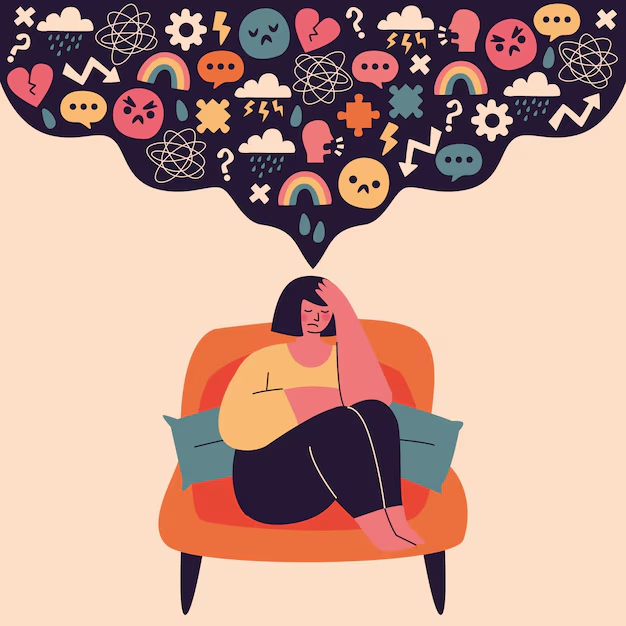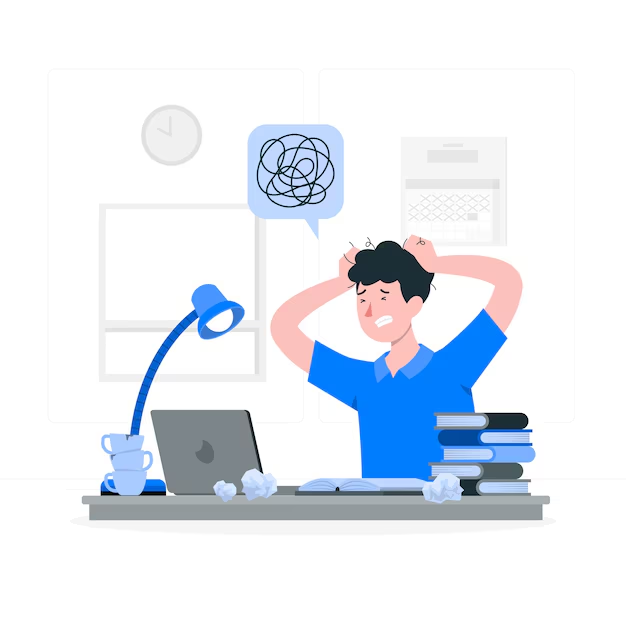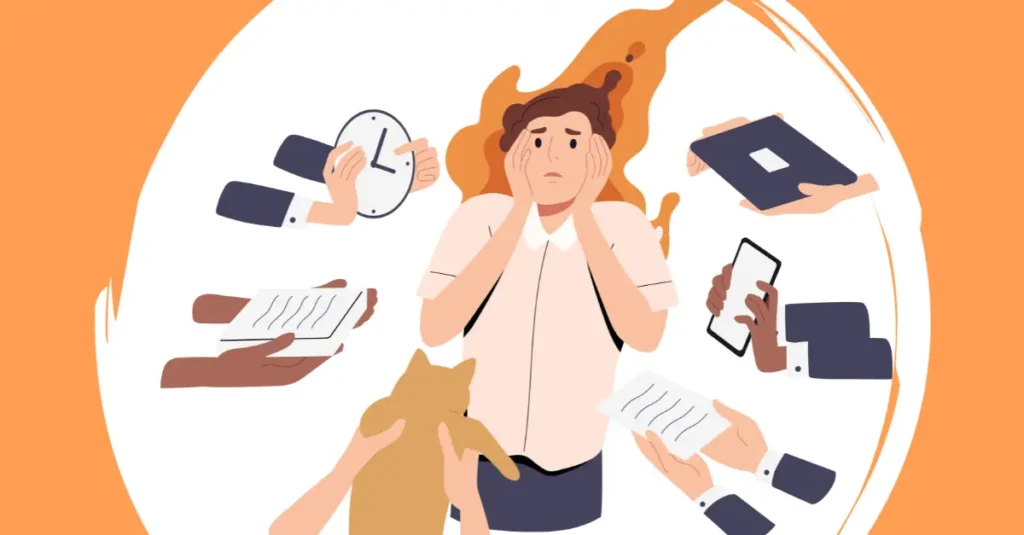Art of Letting Go
As the New Year begins, many of us feel a pull to reset, refresh, and redefine our lives. It’s a time for vision boards, resolutions, and, yes, decluttering. But letting go or decluttering isn’t just about tidying your home or organizing your desk; it’s also about clearing your mind, letting go of emotional baggage, and creating space for a healthier and more productive version of yourself.

Why We Hold On?
Our attachment to possessions, people, or even harmful habits often feels unshakable. But why? The reasons lie in deeply ingrained psychological tendencies. Understanding these reasons can help us overcome the fear of letting go.
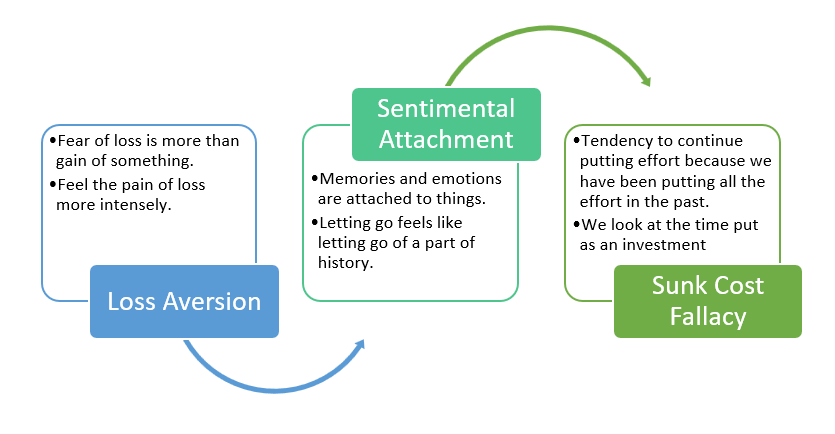
1. Loss Aversion
Loss aversion is a psychological bias that makes us fear losing something more than we value gaining something new. Even if the item or relationship is no longer serving us, the idea of giving it up feels unsettling. For instance, you might keep that old jacket because you “might wear it someday,” even if it’s been in your closet untouched for years.
Kahneman and Tversky’s (1979) groundbreaking research on loss aversion explains this well. Humans feel the pain of loss more acutely than the joy of gain. This bias can trap us into clinging to things—even toxic relationships or outdated possessions—that we’d be better off letting go.
2. Sentimental Attachment
We attach memories and emotions to objects, making it hard to part with them. That chipped coffee mug might remind you of late-night study sessions in college, or that old t-shirt could transport you back to a memorable concert. Letting go feels like losing a part of your history, even though the memories are safely stored in your mind (Neimeyer, 2016).
3. The Sunk Cost Fallacy
The sunk cost fallacy describes our tendency to continue investing in something—be it a relationship, project, or possession—because we’ve already put so much time, money, or energy into it. For example, you might hang onto a friendship that has grown toxic simply because you’ve known the person for years. But holding on to these “investments” only perpetuates harm, preventing you from moving forward (Arkes & Blumer, 1985).
Read More- Making Good New Year’s Goals
Why Decluttering Feels So Good
Decluttering isn’t just about organizing your space—it’s a mental, emotional, and physical release. By freeing yourself from unnecessary burdens, you pave the way for clearer thinking, better focus, and enhanced happiness.
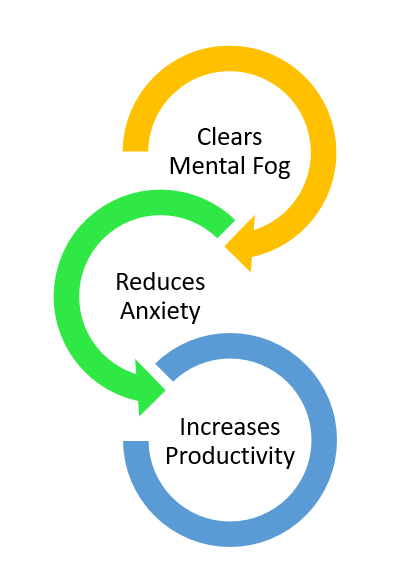
- Clears Mental Fog- When your environment is chaotic, your mind mirrors that state. A study from Princeton University (McMains & Kastner, 2011) found that physical clutter competes for your attention, reducing your ability to focus and increasing stress levels. By decluttering your space, you also declutter your brain.
- Reduces Anxiety- Negative thoughts, unresolved issues, and unprocessed emotions create a background buzz of anxiety. Decluttering your mind—through mindfulness, journaling, or therapy—can significantly reduce this mental noise, leading to better emotional balance (Hölzel et al., 2011).
- Increases Productivity- Decluttering fosters a sense of control. When your surroundings are neat and your mind is clear, you’re more likely to stay on top of tasks. Organizational expert David Allen argues that decluttering allows for “stress-free productivity,” where your energy is directed toward meaningful activities rather than managing chaos (Allen, 2001).
How to Let Go of Physical Clutter
Letting go of physical possessions is often the first step toward broader personal transformation. It’s not just about what you discard—it’s about what you choose to keep and why.
Step 1: Assess Your Relationship with “Stuff”
Ask yourself, Why am I keeping this? Does it serve a purpose, or am I holding on out of guilt, nostalgia, or fear? Acknowledging these emotions can help you make rational decisions about what to keep and what to discard.
Step 2: Marie Kondo It
Marie Kondo’s philosophy—keeping only items that “spark joy”—has taken the world by storm for a reason. This approach aligns with psychological principles by focusing on positivity rather than loss. A 2014 study showed that individuals who used the KonMari method felt a sense of empowerment and control over their lives (Kondo, 2014).
Step 3: Break It into Categories
Decluttering is less overwhelming when approached in steps. Start small: tackle your closet today, your bookshelves tomorrow. Breaking tasks into chunks is supported by research on goal-setting, which shows that smaller, incremental goals are more achievable (Steel, 2007).
Step 4: Donate, Recycle, or Toss
Knowing your discarded items will benefit someone else can make letting go easier. Studies show that giving away possessions creates feelings of altruism and happiness (Aknin et al., 2013). Whether you donate to a charity or pass items along to friends, you’re helping yourself and others.
How to Declutter Your Mind
Your mind, much like your home, can become crowded with unnecessary clutter. From anxious thoughts to unresolved conflicts, mental decluttering is essential for emotional well-being.
- Mindfulness Meditation- Mindfulness is the practice of focusing on the present moment. By sitting quietly and observing your thoughts without judgment, you train your mind to release unproductive worry and anxiety. Research shows mindfulness reduces stress and improves overall emotional well-being (Hölzel et al., 2011).
- The Power of Journaling- Writing down your thoughts is like decluttering your brain. It helps you process emotions, gain clarity, and let go of negativity. Pennebaker and Beall (1986) found that expressive writing can reduce emotional distress and improve mental health.
- Cognitive Reframing- This technique involves changing the way you interpret challenges or setbacks. Instead of viewing a failure as a dead end, see it as a learning experience. Cognitive reframing is a core element of cognitive-behavioral therapy, a widely used and evidence-based approach to improving mental health (Beck, 1976).
Read More- Explore Journals for Mental Health
How to Let Go of Toxic Relationships
Relationships shape your mental health, for better or worse. Letting go of toxic connections is vital to maintaining emotional balance and creating room for healthier relationships.
- Recognize the Signs- Not every relationship is meant to last. If a connection leaves you feeling drained, disrespected, or undervalued, it may be time to let it go. Psychologists suggest assessing the health of relationships regularly, much like you would your physical health (Cloud & Townsend, 1992).
- Set Boundaries- Establishing boundaries isn’t just about saying “no” to others; it’s about saying “yes” to yourself. Healthy boundaries protect your emotional energy and allow for more fulfilling connections.
- Practice Forgiveness—For Yourself and Others- Forgiveness is a powerful tool for emotional decluttering. It doesn’t mean condoning bad behavior, but rather releasing the anger and resentment that weigh you down. Studies link forgiveness to lower stress and better mental health (Toussaint et al., 2012).
Why Declutter?
Decluttering your space and mind doesn’t just feel good—it sets the stage for sustained focus, creativity, and efficiency. Here’s why it’s a game-changer.
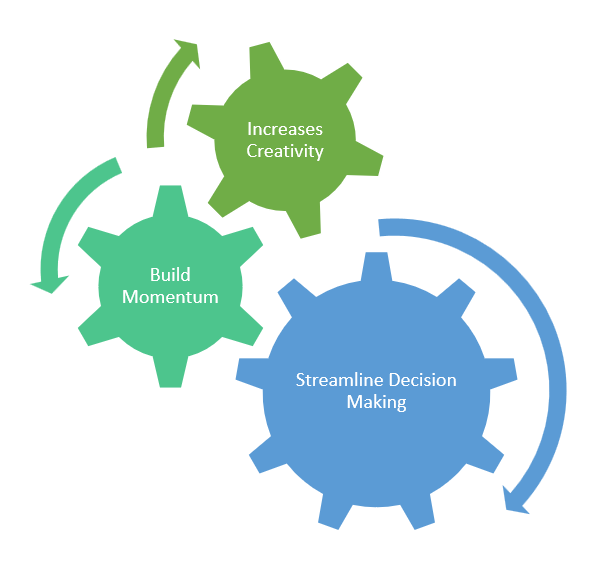
- Streamlines Decision-Making- A clutter-free environment reduces decision fatigue. When your space is organized, you spend less time looking for things and more time focusing on tasks that matter.
- Enhances Creativity- Creative thinking thrives in a clear, open space. A 2012 study by Mehta et al. found that moderate levels of organization foster innovative problem-solving.
- Builds Momentum- Decluttering creates a snowball effect. Once you see the benefits in one area of your life, you’re motivated to tackle others. This momentum is fueled by dopamine, the brain’s reward chemical, which is released when you complete a satisfying task (Muraven & Baumeister, 2000).
Practical Tips for Staying Decluttered
Decluttering isn’t a one-and-done event; it’s an ongoing process. These tips will help you maintain a clean and clear life year-round.
- Adopt a Minimalist Philosophy- Minimalism isn’t about deprivation; it’s about prioritizing what truly matters. By focusing on quality over quantity, you maintain a clearer space and mind.
- Regular Maintenance- Make decluttering a habit rather than a one-time event. Schedule monthly check-ins to evaluate what’s working in your physical and emotional spaces.
- Celebrate Progress- Don’t wait until everything is perfect to feel proud. Celebrate small wins along the way, whether it’s donating a bag of clothes or letting go of a toxic friendship.
Conclusion
Decluttering your life—physically, mentally, and relationally—is a transformative act of self-care. By letting go of what no longer serves you, you make room for growth, creativity, and joy. Whether it’s clearing out your closet, journaling your thoughts, or cutting ties with toxic people, the act of letting go isn’t about loss; it’s about freedom.
So as you step into the New Year, remember: decluttering isn’t a chore; it’s a gift you give to yourself. Start small, stay consistent, and watch as your life transforms, one step—and one thought—at a time.
Subscribe to PsychUniverse
Get the latest updates and insights.
Join 3,022 other subscribers!
Niwlikar, B. A. (2025, January 1). Learning the Art of Letting Go and 3 Important Reasons Why We Hold On. PsychUniverse. https://psychuniverse.com/art-of-letting-go/

